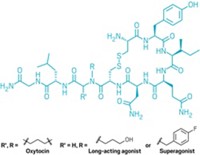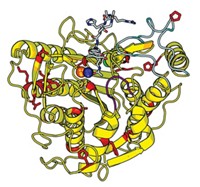Advertisement
Grab your lab coat. Let's get started
Welcome!
Welcome!
Create an account below to get 6 C&EN articles per month, receive newsletters and more - all free.
It seems this is your first time logging in online. Please enter the following information to continue.
As an ACS member you automatically get access to this site. All we need is few more details to create your reading experience.
Not you? Sign in with a different account.
Not you? Sign in with a different account.
ERROR 1
ERROR 1
ERROR 2
ERROR 2
ERROR 2
ERROR 2
ERROR 2
Password and Confirm password must match.
If you have an ACS member number, please enter it here so we can link this account to your membership. (optional)
ERROR 2
ACS values your privacy. By submitting your information, you are gaining access to C&EN and subscribing to our weekly newsletter. We use the information you provide to make your reading experience better, and we will never sell your data to third party members.
Physical Chemistry
Chemists Blend Two Molecules Into One To Combat Alzheimer’s
Medicinal Chemistry: A hybrid of curry’s curcumin and the sleep hormone melatonin is more potent in a cellular Alzheimer’s model than each molecule alone
by Louisa Dalton
June 5, 2014

Some researchers think that because many things go wrong in the neurons of patients with Alzheimer’s disease, treatments that try to fix just one are unlikely to change the course of the disease. To battle Alzheimer’s on multiple fronts, chemists propose hybridizing two compounds that show promise alone: the natural products curcumin and melatonin. The crossbred molecule shows greater potency in preventing cell death in one model of Alzheimer’s than either parent compound (ACS Chem. Neurosci. 2014, DOI: 10.1021/cn500081s).
There are several problems in the brain that researchers think lead to the development of Alzheimer’s disease, including neuroinflammation, oxidative stress in neurons, formation of amyloid-β plaques, and accumulation of tangles of tau proteins inside cells. Shijun Zhang of Virginia Commonwealth University and his group turned to molecular hybridization to find compounds that targeted as many of these problems as possible.
They started with two natural products shown to be neuroprotective in previous studies. Curcumin, one of the compounds responsible for the yellow color of the spice turmeric, lowers amyloid-β levels in the brain, decreases neuroinflammation, and quenches free radicals. The sleep hormone melatonin regulates circadian rhythms and has some anti-inflammatory and antioxidant properties. Some studies have reported that melatonin improves sleep and lowers the evening irritability often seen in patients with Alzheimer’s.
When Zhang examined the structures of curcumin and melatonin, he instantly saw that he could hybridize them using a carbonyl found in both compounds. His group synthesized a hybrid molecule that sports a novel β-ketone amide that replaces the β-diketone in curcumin and the acetamide in melatonin.
The researchers tested the hybrid on human neuroblastoma cells genetically tweaked to produce high levels of amyloid-β peptides and eventually die. They found that their compound prevented cell death at concentrations that were 1% of those needed for curcumin or melatonin alone or together.
The mechanism behind the hybrid’s effectiveness is unknown, Zhang says, but early tests suggest it scavenges free radicals in the cells’ mitochondria. The group’s latest version of the hybrid can cross the blood-brain barrier in mice. Now they are testing the compound in mouse models for Alzheimer’s.
Creating a molecule that targets different aspects of the disease is an intriguing alternative to drug cocktails, says Sally A. Frautschy of the University of California, Los Angeles. Yet the hybrid will require rigorous testing in other cellular and animal models of Alzheimer’s disease, she says. Gregory M. Cole, also at UCLA, agrees more testing is needed, in particular to determine if beneficial properties of the two parent molecules were lost in the hybrid.





Join the conversation
Contact the reporter
Submit a Letter to the Editor for publication
Engage with us on Twitter